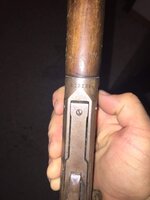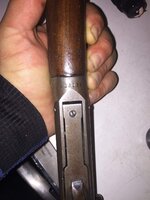Gold Supporter
Bronze Supporter
- Messages
- 3,259
- Reactions
- 10,369
I'd clean up the metal, and keep it protected with oil. Remember, the old nickel steel that Winchester used in the day didn't take well to bluing, and you'll find many examples of these guns with no bluing remaining, even though the guns have been well taken care of. The stock is a different story. I'd repair it.















